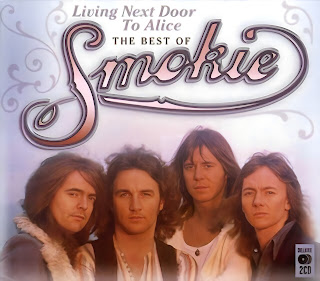Buddy Holly: Rolling Stones #13 Greatest Artist of All Time (2011)
Born: Charles Hardin Holley
September 7, 1936
Lubbock, Texas, US.
Died: February 3, 1959 (aged 22)
Clear Lake, Iowa, US.
Occupation: Pioneer of Rock and Roll
Singer-songwriter
Instruments: Vocals, guitar
Years active: 1952–1959
In Memoriam (1959)
In his hit "American Pie," Don McLean called it "The day the music died." Sixty-two years ago today - on February 3, 1959 - Buddy Holly, Ritchie Valens, and J. P. Richardson (the Big Bopper) were killed when their plane crashed.
Their last concert, part of the Winter Dance Party tour, was at The Surf Ballroom in Clear Lake, Iowa, the night before they died. The accident was caused by bad weather. The 21-year-old pilot wasn't qualified to fly in low visibility using instruments. Holly was 22, Valens was 17, and Richardson was 28 years old at the time.
Everyday (1957)
"Everyday." by Buddy Holly was number 238 on Rolling Stone's pick for the 500 Greatest Songs of All Time in 2004. Holly and Norman Petty wrote the song. It was released as the B-side of "Peggy Sue," which went to number 3 on Billboard. Holly's version of this song never charted, but two others did. In 1972, John Denver's version reached number 81 in the United States; in 1985, James Taylor made number 61 with his cover.
Peggy Sue (1957)
"Peggy Sue" was inducted into the Grammy Hall of Fame in 1999. It ranks number 197 on Rolling Stone magazine's list of the "500 Greatest Songs of All Time" and is among the Rock and Roll Hall of Fame and Museum's "500 Songs that Shaped Rock & Roll." The song was initially titled "Cindy Lou."
If you knew Cindy Lou
Then you'd know why I feel blue
without Cindy
Holly's drummer, Jerry Allison, asked Buddy to change the name to "Peggy Sue" after a girl he dated. Holly agreed. Allison and Peggy Sue eloped in 1958 and divorced nine years later.
Rave On (1958)
Buddy Holly's version of "Rave On" ranks number 155 on Rolling Stone magazine's list of "The 500 Greatest Songs of All Time." It was written by Sonny West, Bill Tilghman, and Norman Petty. The title was inspired by the song "Dixie Fried" by Carl Perkins, which uses the refrain "rave on." It was first recorded by West. Buddy Holly recorded the song later the same year.
Not Fade Away (1957)
Buddy Holly's version of "Not Fade Away"" ranks number 108 on Rolling Stone's list of "The 500 Greatest Songs of All Time." Originally released as the B-side of the hit single "Oh, Boy!," it's one of the first pop songs to feature the "Bo Diddley" sound.
The unique beat was from West Africa and was adopted by Diddley. Jerry Allison, the Cricket's drummer, pounded it on a cardboard box. He'd heard Buddy Knox's drummer do the same on "Party Doll."
The Rolling Stones used the same tempo when they recorded a cover of "Not Fade Away" in 1964. It was a significant hit for them in Britain and the A-side of the band's first US single.
That'll Be the Day (1957)
"That'll Be the Day" was inducted into the Grammy Hall of Fame in 1998. It was placed in the National Recording Registry - a list of sound recordings that "are culturally, historically, or aesthetically important, and/or inform or reflect life in the United States" - in 2005. Rolling Stone magazine ranked it 39 for the "500 Greatest Songs of All Time" in 2004. It's one of his two songs on the Rock & Roll Hall of Fame and Museum's 500 Songs That Shaped Rock & Roll.
Buddy Holly wrote this song with his drummer, Jerry Allis after they saw John Wayne's Western movie, The Searchers. Wayne uses the phrase "That'll be the day" whenever he hears something he thinks is unlikely to happen. At Jerry's house one night, Buddy told Jerry he'd like to record a hit song. Jerry replied, "That'll be the day," imitating John Wayne in the film. They wrote the music, and Holly had his hit.






Comments
Post a Comment